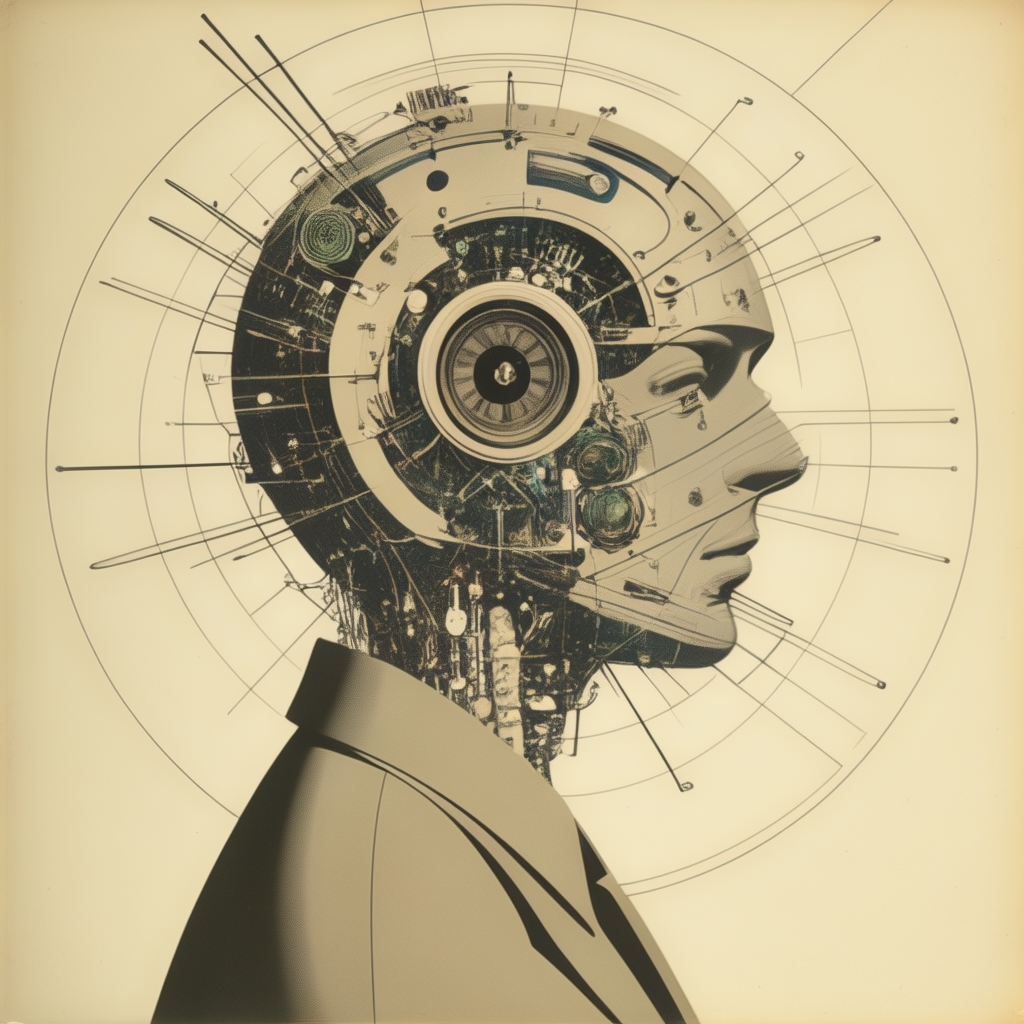Mastering Algorithms, Analytical Skills, Structured Thinking, and Statistical Analysis: The Foundations of Problem Solving and Innovation
In today’s data-driven world, the power of algorithms, analytical skills, structured thinking, and statistical analysis has become more critical than ever. These four pillars empower us to solve complex problems, draw insights from data, and make sound decisions. In this post, we’ll explore each of these concepts, their importance, and how to develop these skills effectively.
Algorithms: The Backbone of Modern Technology
What are Algorithms?
An algorithm is a step-by-step procedure or a set of rules designed to perform a specific task or solve a particular problem. Algorithms power almost every modern application, from search engines and recommendation systems to financial modeling and even self-driving cars. They are essential in automating tasks and making decisions at scale.
Why are Algorithms Important?
Algorithms provide a structured and efficient way to tackle problems, especially those that involve large datasets or repetitive tasks. They save time, reduce errors, and enable innovative solutions that would otherwise be impossible. For instance:
- Sorting Algorithms like Quick Sort and Merge Sort enable efficient data organization, crucial for searching, filtering, and managing massive datasets.
- Machine Learning Algorithms such as decision trees, neural networks, and support vector machines allow computers to make predictions and recognize patterns without explicit programming.
How to Develop Algorithmic Thinking:
- Understand Problem Requirements: Break down problems to understand inputs, outputs, constraints, and desired outcomes.
- Learn Algorithm Basics: Start with common algorithms (e.g., sorting, searching, graph traversal) and understand their inner workings.
- Practice with Complexity in Mind: Each algorithm has a time and space complexity; learning Big O notation will help assess and improve the efficiency of algorithms.
Analytical Skills: Making Sense of Data
What are Analytical Skills?
Analytical skills enable you to interpret and make sense of data and other information sources to draw conclusions, identify patterns, and make decisions. These skills involve logical thinking, the ability to question assumptions, and the capability to dive deep into data to derive insights.
Why Analytical Skills are Crucial:
In any field, from business to scientific research, analyzing data and information to extract actionable insights is invaluable. For instance:
- In business analysis, these skills help determine market trends, customer needs, and operational efficiencies.
- In scientific research, they aid in interpreting experimental results and validating hypotheses.
How to Improve Your Analytical Skills:
- Practice Problem Solving: Tackle puzzles, games, or real-world case studies that require logical thinking and deduction.
- Use Data Tools: Familiarize yourself with tools like Excel, SQL, Python, or R to analyze datasets.
- Develop a Curious Mindset: Question assumptions and explore different angles before making a conclusion.
Structured Thinking: Building a Logical Framework
What is Structured Thinking?
Structured thinking involves breaking down complex problems into manageable parts and arranging those parts in a logical, hierarchical order. This skill enables you to tackle challenges systematically and find effective solutions by analyzing each component separately.
Why Structured Thinking Matters:
Structured thinking is particularly valuable in problem-solving, project management, and decision-making. For example:
- In software development, a developer might use structured thinking to break down a large project into modules, functions, and classes, making the project more manageable.
- In business strategy, structured thinking allows leaders to break down goals into smaller objectives and tasks, creating a roadmap for the entire team.
How to Develop Structured Thinking Skills:
- Practice Problem Decomposition: Break down big problems into smaller parts. For instance, a website redesign could involve sections like user experience, content, backend infrastructure, and testing.
- Use Frameworks: Adopt problem-solving frameworks like MECE (Mutually Exclusive, Collectively Exhaustive) to ensure completeness and avoid overlap.
- Map Out Processes Visually: Flowcharts, mind maps, and diagrams help create a visual representation of processes, making it easier to understand and analyze.
Statistical Analysis: Turning Data into Insight
What is Statistical Analysis?
Statistical analysis is a process of collecting, analyzing, and interpreting data to make informed decisions. It relies on techniques like mean, median, standard deviation, correlation, and hypothesis testing to reveal patterns and validate findings.
Why Statistical Analysis is Key:
Statistical analysis underpins research, business intelligence, healthcare, social sciences, and nearly every field where data plays a role. For example:
- In healthcare, statistics are used to analyze patient outcomes, measure the effectiveness of treatments, and track the spread of diseases.
- In marketing, it’s applied to understand customer behavior, optimize campaigns, and forecast trends.
How to Enhance Statistical Analysis Skills:
- Learn Core Concepts: Master basic statistics like descriptive and inferential statistics, probability, and correlation.
- Use Statistical Software: Get familiar with tools like SPSS, SAS, R, or Python libraries (e.g., pandas, NumPy, SciPy) for data analysis.
- Apply Hypothesis Testing: Practice using hypothesis testing to validate assumptions about a dataset and make evidence-based decisions.
Bringing It All Together: Applying These Skills in Real-World Scenarios
To maximize their effectiveness, algorithms, analytical skills, structured thinking, and statistical analysis should be integrated when solving problems or developing solutions. Here’s an example of how they might work together:
Case Study: Building a Product Recommendation System
Imagine you’re creating a recommendation engine for an e-commerce site. Here’s how each skill would play a role:
- Algorithms: Use collaborative filtering or a recommendation algorithm to suggest products based on user behavior.
- Analytical Skills: Examine user data (e.g., purchase history, clicks) to understand behavior patterns and identify preferences.
- Structured Thinking: Break down the recommendation system into user profiles, product matching, and feedback mechanisms.
- Statistical Analysis: Use statistical methods to validate the accuracy of the recommendations, like A/B testing to compare recommendation models.
Through combining these skills, you can build a reliable, data-driven system that improves user satisfaction and boosts sales.
To build a deeper understanding of algorithms, analytical skills, structured thinking, and statistical analysis, we can explore these topics from multiple perspectives, including science, neuroscience, mathematics, data science, and philosophy of logic. Let’s dive deeper into each of these concepts, considering how they interconnect and play a critical role in both human cognition and computational systems.
1. Algorithms: Bridging Theory and Practice
From a Mathematical Perspective:
At its core, an algorithm is a mathematical concept, as it can be formally described as a sequence of steps designed to solve a problem. This involves:
- Mathematical Optimization: Algorithms often rely on principles of optimization, such as finding the minimal cost or maximal value. For example, algorithms in machine learning aim to minimize error through gradient descent, which is grounded in calculus and linear algebra.
- Graph Theory: In computer science, many algorithms are based on graph theory (e.g., Dijkstra’s algorithm for shortest path problems), which itself is an area of mathematics focused on the study of graphs—collections of nodes connected by edges.
From a Neuroscience Perspective:
In the human brain, decision-making and problem-solving processes resemble algorithms in many ways. Neuroscientists have observed that the brain processes information in a highly structured and systematic way, much like an algorithm.
- Neuroplasticity and Algorithms: Just as algorithms evolve to become more efficient over time, the brain is capable of neuroplasticity, which allows it to rewire itself based on new experiences and learning. This adaptability mirrors the process of refining algorithms for optimal performance.
- Cognitive Biases: The brain also employs heuristics (mental shortcuts) to simplify decision-making, which sometimes leads to cognitive biases. This can be seen as a “simplified algorithm” that can, at times, cause suboptimal decision-making.
From a Data Science Perspective:
Data science is rooted in algorithms. Algorithms are used to process and interpret vast amounts of data, turning raw data into meaningful insights. For instance:
- Sorting and Searching: In data structures, algorithms are used to organize and access data efficiently, which is crucial for big data applications where speed and accuracy are paramount.
- Machine Learning: Advanced algorithms in machine learning like neural networks, decision trees, and support vector machines rely on statistical principles to process data and make predictions. These algorithms are foundational for building AI systems that learn from experience, similar to how human brains develop cognitive functions over time.
2. Analytical Skills: Decoding Complex Data
From a Scientific Perspective:
Analytical skills are essential in the scientific method, which involves formulating hypotheses, conducting experiments, and analyzing results. This process mirrors the way algorithms function in data science:
- Hypothesis Testing: In both science and analytics, we test hypotheses to validate assumptions. Statistical methods like p-values or confidence intervals are used to confirm or reject hypotheses based on data.
- Scientific Problem Solving: Analytical skills are fundamental in fields like physics and chemistry, where theories and models must be tested against real-world data. Understanding and predicting phenomena—whether it’s the laws of motion or chemical reactions—require sharp analytical thinking.
From a Neuroscience Perspective:
Cognitive processes in the brain allow humans to perform data analysis naturally. The prefrontal cortex is especially involved in tasks requiring complex analysis, such as planning, decision-making, and logical reasoning.
- Neurocognition and Analytical Thinking: The ability to analyze involves both working memory (holding information temporarily for manipulation) and executive function (the ability to plan and prioritize). These cognitive faculties help humans break down complex data, similar to how a data scientist processes large datasets.
- Emotion and Bias: Neuroscience also sheds light on the role of emotions in analytical thinking. The amygdala can interfere with the rational decision-making process, highlighting the importance of emotional regulation when analyzing data objectively.
From a Mathematics Perspective:
Mathematical thinking enhances analytical skills. When faced with a problem, an individual can use mathematical models (like calculus, algebra, or geometry) to analyze the situation quantitatively.
- Logical Deduction: Analytical skills rely heavily on logic, a fundamental branch of mathematics. Logical reasoning allows individuals to decompose complex problems into smaller, solvable components.
3. Structured Thinking: Organizing the Mind for Clarity
From a Scientific Perspective:
Structured thinking is often required in scientific experiments to ensure that results are repeatable and reliable. It allows researchers to:
- Control Variables: When designing experiments, it’s essential to isolate and control variables to understand cause and effect. A structured approach enables a systematic breakdown of the variables in play.
- Create Models: In physics and engineering, structured thinking helps to create models that predict real-world behavior. Whether it’s a thermodynamic system or a biological model, the process involves clear, logical structuring of variables and equations.
From a Neuroscience Perspective:
Neuroscience shows that the brain is naturally inclined to organize information. Structured thinking often occurs in the prefrontal cortex, which is responsible for higher-order cognitive functions.
- Cognitive Frameworks: Humans naturally categorize and organize information into mental frameworks. For example, when problem-solving, the brain breaks tasks into sub-tasks, much like a project manager breaks down a large project into smaller, manageable goals.
- Schemas and Patterns: Our brains use schemas—mental structures that help us organize and interpret information. Structured thinking is like applying a new schema to an unknown task, enabling the brain to more efficiently process and solve the problem at hand.
From a Mathematics Perspective:
Mathematics thrives on structure, as the entire field relies on clear, defined steps and proofs. Structured thinking in mathematics allows individuals to:
- Develop Theorems: Mathematical proofs are an embodiment of structured thinking. Every step in a proof builds upon previous ones, ensuring that the conclusion is logically sound.
- Use Structured Methods: Methods like divide and conquer, induction, or modular arithmetic are tools that allow mathematicians to approach problems in an organized manner.
4. Statistical Analysis: Interpreting Data Through Numbers
From a Scientific Perspective:
Statistics form the backbone of scientific research, enabling scientists to analyze data, interpret findings, and validate results. For instance:
- Experimental Design: In controlled experiments, statistical analysis ensures that the results are due to the variables being tested, not random chance.
- Probability and Inference: Statistical tests like ANOVA or chi-square tests allow researchers to infer properties of populations based on sample data.
From a Neuroscience Perspective:
In neuroscience, statistical analysis is used to understand brain activity and how different regions of the brain interact. Techniques like functional magnetic resonance imaging (fMRI) require statistical methods to:
- Interpret Brain Activity: fMRI data involves complex statistical analysis to correlate brain activity with cognitive tasks. By applying multivariate statistical methods, neuroscientists can pinpoint which areas of the brain are active during specific tasks.
- Neurostatistics: Statistical methods are essential for mapping out how brain structures relate to cognitive functions, providing a quantitative understanding of mental processes.
From a Mathematics Perspective:
Statistics is a branch of applied mathematics that deals with data collection, interpretation, and analysis. Key concepts like mean, median, variance, and probability distributions are foundational to statistical reasoning.
- Descriptive vs. Inferential Statistics: Descriptive statistics summarize data, while inferential statistics draw conclusions or make predictions based on sample data. Both aspects are crucial for making data-driven decisions in various fields, from business to healthcare.
From a Data Science Perspective:
Statistical analysis is central to data science, where the goal is to uncover trends and make predictions based on large datasets.
- Predictive Analytics: Statistical methods like regression analysis and Bayesian inference are used to predict future outcomes. These tools are essential in fields like finance, marketing, and healthcare, where data patterns often guide business decisions.
To further enrich the understanding of algorithms, analytical skills, structured thinking, and statistical analysis, here are additional detailed insights and nuances, considering different disciplines and perspectives:
1. Algorithms: Deeper Layers
Algorithmic Efficiency and Complexity:
- Time Complexity: Understanding how an algorithm’s runtime grows as the size of the input increases is crucial. For example, Big O notation is used to classify algorithms according to how their run time or space requirements grow as the input size increases. This reveals the efficiency of the algorithm, allowing us to select the most appropriate one for large datasets or systems.
- Space Complexity: Not only time but the memory consumed by algorithms needs to be optimized. Algorithms with high space complexity can be infeasible when working with large datasets or constrained environments.
Parallelization of Algorithms:
- Algorithms can be designed to run in parallel, where tasks are divided among multiple processors. This concept, critical in fields like supercomputing, drastically improves processing speeds for large datasets. Concepts like map-reduce in distributed systems highlight how algorithmic steps can be efficiently distributed.
Randomness and Probabilistic Algorithms:
- In some cases, algorithms rely on randomness to solve problems more efficiently. Monte Carlo methods, for example, use random sampling to obtain numerical results. In certain cases, algorithms like Simulated Annealing solve optimization problems by introducing controlled randomness to explore the solution space more effectively.
2. Analytical Skills: In-depth Nuances
Mental Models and Frameworks:
- Mental models are essential cognitive tools that help in analyzing problems by structuring how we think about them. For example, in business analysis, a framework like SWOT (Strengths, Weaknesses, Opportunities, Threats) helps individuals break down complex situations into manageable segments.
Pattern Recognition:
- One of the foundational aspects of analytical thinking is the ability to spot patterns within chaotic or seemingly unorganized data. In human cognition, pattern recognition helps us make sense of new experiences by comparing them to previous encounters, speeding up decision-making and reducing cognitive load.
Cognitive Load and Analytical Depth:
- The ability to perform complex analysis can be influenced by cognitive load—how much information the brain is processing at one time. Overloading the working memory reduces the capacity to analyze deeply. Breaking down information into chunks allows for more efficient analysis, similar to how large datasets are broken down into more manageable subsets for better interpretation.
Lateral Thinking and Analytical Flexibility:
- Lateral thinking refers to thinking creatively or “outside the box.” While traditional analytical skills involve logical deduction, lateral thinking helps in solving problems that don’t have obvious solutions. This includes pattern-breaking and reframing a problem in an entirely new way, often leading to breakthrough ideas in analytical work.
3. Structured Thinking: Further Exploration
Breaking Down Complex Systems:
- Structured thinking helps in decomposing a system into smaller, manageable parts. For example, in systems engineering, problems are approached through the systems thinking framework, which looks at how components of a system interact with each other. This structured approach is essential in areas like software development, where understanding the interaction between components (database, server, frontend, etc.) is key.
Hierarchical Thinking:
- Structured thinking often relies on hierarchies, both in terms of information and decision-making. In the human brain, the prefrontal cortex orchestrates decision-making by organizing thoughts hierarchically—making high-level decisions first, followed by lower-level problem-solving. Similarly, in organizational structures, tasks and responsibilities are typically arranged hierarchically, allowing for systematic action based on priorities.
The Role of Metacognition:
- Metacognition, or thinking about one’s thinking, enhances structured thinking. When we reflect on the way we approach problems or make decisions, we can adjust strategies to improve efficiency. Metacognitive awareness can be crucial for structured thinking, as it involves recognizing when a structured approach needs modification based on outcomes.
4. Statistical Analysis: Further Nuances
Sampling and Bias:
- The process of sampling in statistical analysis often carries inherent biases. Selection bias can occur if the sample doesn’t represent the population accurately, skewing results. Understanding these biases is essential when interpreting statistical conclusions, especially in areas like medical research or market surveys, where flawed sampling can lead to misleading conclusions.
The Law of Large Numbers and Convergence:
- In statistics, the Law of Large Numbers states that as sample size increases, the sample mean approaches the population mean. This principle underpins much of statistical inference. It’s critical when interpreting survey data or clinical trials, where large sample sizes are required to draw reliable conclusions.
P-Values and Significance:
- The p-value is a fundamental concept in statistical analysis, determining whether an observed effect is statistically significant. However, p-values are often misused, especially when p-hacking (manipulating the data to find significant results) occurs. A false positive is a risk when p-values are incorrectly interpreted, making it crucial to complement p-values with other metrics like confidence intervals.
Correlation Does Not Imply Causation:
- One of the most nuanced aspects of statistical analysis is the recognition that correlation does not imply causation. Two variables may move together due to common external factors, and not necessarily because one causes the other. For example, an increase in ice cream sales might correlate with an increase in drowning incidents in summer, but it does not mean eating ice cream causes drowning.
Bayesian Inference and Updating Beliefs:
- Bayesian inference is a statistical method that updates the probability estimate for a hypothesis as new evidence is gathered. It contrasts with frequentist statistics, which typically provides fixed estimates. Bayesian methods are powerful in dynamic environments where data is continuously evolving, such as in financial modeling or machine learning algorithms.
5. Connections Between Concepts
Algorithmic Thinking and Structured Analysis:
- The process of breaking down a problem into a set of steps (algorithmic thinking) is an inherent part of structured analysis. For example, in business or project management, breaking down a project into milestones is analogous to designing an algorithm with clear steps. Both require logical steps and decisions, often involving iterative processes of refinement.
Statistical Analysis in Algorithmic Design:
- Algorithms themselves can be designed using statistical analysis. For instance, randomized algorithms in computer science often rely on statistical principles to make decisions or handle uncertainty efficiently. This intersection shows how deeply statistics informs algorithmic thinking, whether in testing hypothesis, managing data, or building efficient algorithms.
Analytical Skills in Structuring Data:
- Analytical skills are often crucial in structuring data for further analysis. Deciding what data is relevant, how to categorize it, and determining how to apply statistical models all require sharp analytical abilities. This skill is foundational in fields like data engineering, where raw data must be processed and structured before it can be analyzed.
The interconnectivity of algorithms, analytical skills, structured thinking, and statistical analysis can be best understood through their mutual reinforcement in cognitive processes, computational methodologies, and real-world applications. Each concept, while distinct, informs and strengthens the others—forming a cohesive framework for problem-solving, data analysis, and decision-making. Whether in human cognition or technological design, these skills allow us to navigate complexity and create systems that solve real-world problems in an increasingly data-driven world.
Structured Thinking and Analytical Thinking: Exploring New Dimensions
1. The Role of Analogies in Structured and Analytical Thinking:
- Analogical reasoning is a powerful cognitive tool that bridges the gap between new problems and familiar solutions. By recognizing patterns or similarities between unrelated domains, structured and analytical thinking can unlock new perspectives. For instance, understanding the way ant colonies organize themselves to find food can inspire more efficient methods for network routing algorithms or logistics optimization. This “thinking outside the box” technique enables problem-solvers to approach challenges in innovative ways, using seemingly unrelated concepts to inform structured solutions.
2. Thinking in Constraints and Boundaries:
- Structured thinking thrives on understanding the boundaries or limitations of a problem. An effective way to approach a challenge is to define its constraints—whether they are time, resources, or technology—and work backward from there. This constraint-based approach can spark creativity, as limitations often force us to look for unconventional methods. For example, in product design, constrained thinking (e.g., minimalistic design) can lead to highly functional and efficient solutions.
3. Thinking in Layers: Multi-layered Problem Solving:
- Both structured and analytical thinking benefit from a layered approach, where problems are broken down into sub-problems with varying levels of abstraction. This approach not only helps prioritize issues but also ensures that solutions are scalable. For example, in software development, the development team might first tackle high-level architecture and gradually move to implementation details like coding and testing. Layered thinking encourages tackling one problem at a time, while keeping the larger framework intact. This strategy fosters creative problem-solving by isolating variables and exploring their interdependencies.
4. Divergent Thinking: A Bridge to Analytical Thinking:
- While structured thinking is typically linear, divergent thinking plays a pivotal role in analytical problem-solving. Divergent thinking allows individuals to generate a wide variety of potential solutions before narrowing them down through analysis. For example, when faced with a challenge, rather than immediately narrowing the focus, one might brainstorm numerous potential approaches, regardless of how unconventional they seem. Once this broader pool of ideas is created, analytical thinking can then help assess the viability of each solution.
5. The Influence of Systems Thinking:
- Structured thinking is deeply tied to systems thinking, which involves understanding how different components of a system interact with each other. Analytical thinking can be enhanced by viewing problems through a systemic lens—recognizing patterns, feedback loops, and interdependencies. For instance, a business process can be analyzed not just by its individual parts but also by how the parts influence and affect each other in a larger ecosystem. This holistic view can identify hidden variables or secondary effects that might not be visible through a narrower, isolated analysis.
6. Mental Simulation and Predictive Modeling:
- Mental simulation is a technique that can enhance both structured and analytical thinking. It involves visualizing or mentally running through a scenario to test potential outcomes. This “thinking ahead” approach, often used in decision-making, allows individuals to predict consequences and structure their approach accordingly. In the field of neuroscience, this process is known as episodic foresight—the ability of the brain to simulate potential future scenarios. By mentally simulating different pathways and their results, structured thinkers can better navigate the complexity of real-world problems and prepare for unexpected obstacles.
7. The Power of Constraints in Creativity:
- Constraints, while often seen as limiting, are a vital tool for creativity in analytical thinking. By forcing a focus on core essentials, constraints eliminate extraneous variables and drive the thinker toward more innovative solutions. For example, in a hackathon where developers are given a limited set of tools and time, structured thinking within those constraints can lead to more creative and impactful solutions. Analytical thinking, in this case, helps refine the ideas within the imposed boundaries, leading to optimized results.
8. Feedback Loops and Iterative Problem-Solving:
- Structured thinking is enhanced through the use of feedback loops. As problems are solved in stages, feedback helps refine and improve the next stage of the solution. This iterative process ensures that small insights and observations inform future decisions, creating an evolving framework of problem-solving. In fields like product development, feedback loops from early prototypes allow teams to make analytical adjustments before moving forward. This adaptability is crucial when working on complex or long-term projects.
9. Tension between Abstraction and Detail:
- Analytical thinking involves a careful balance between abstraction (overview) and detail. Too much focus on the big picture can lead to missed subtleties, while concentrating too much on details can obscure the broader strategic goals. Effective structured thinkers toggle between both perspectives, adjusting their level of focus depending on the situation. For instance, in urban planning, a team may begin by conceptualizing a city’s infrastructure (abstraction), only to zoom into traffic patterns or water supply logistics (details), thereby ensuring that both the macro and micro factors are accounted for.
10. Emotional Intelligence and Analytical Thinking:
- Emotional intelligence (EQ) plays an unexpected yet important role in structured and analytical thinking. While analytical thinking is typically seen as a rational, logic-based activity, emotions can heavily influence decisions. Recognizing the emotional components of decision-making helps structured thinkers adapt their strategies to suit both the data and the people involved. For example, a business leader may analyze data and arrive at an optimal financial strategy, but if this strategy disregards employee morale or consumer trust, the execution may fail. Emotional intelligence ensures that human factors are considered in the structured approach to problem-solving.
11. Cognitive Dissonance and Structured Resolution:
- Cognitive dissonance, the discomfort that arises when holding conflicting thoughts, often occurs during analytical thinking. This psychological tension can lead to greater clarity or creative breakthroughs if addressed properly. Structured thinkers must learn to embrace the discomfort of cognitive dissonance as it signals a need to re-evaluate or reconsider assumptions. This tension can often push thinkers toward innovative solutions by challenging the established framework of thought.
12. The Role of Storytelling in Structuring Information:
- Both structured and analytical thinking benefit from the skill of storytelling, which provides a coherent framework for presenting complex data or information. Stories help structure otherwise disparate facts into a narrative that is easier to follow and analyze. In business analysis or data visualization, creating a story from data can not only make insights more compelling but also guide decision-makers toward the right conclusions. This blend of creativity and structure ensures that analytical conclusions are both insightful and impactful.
13. Analytical Thinking as a Social Process:
- Analytical thinking does not happen in isolation—it is often a social activity. Group discussions, brainstorming sessions, and debates can enhance the depth of analytical thought. Structured thinking, when combined with the collective intelligence of a team, allows for more robust and well-rounded solutions. In design thinking, for example, collaboration fosters a cross-pollination of ideas, helping to structure thoughts in new and effective ways. This team-oriented analytical approach can lead to breakthrough ideas that may not have been possible in a solitary environment.
14. Epistemic Humility in Structured Thinking:
- Epistemic humility refers to the understanding that one’s knowledge is limited. This perspective encourages structured thinkers to approach problems with a mindset of openness, recognizing the possibility that their initial assumptions may be wrong. Analytical thinking is enhanced when one is willing to accept that solutions may evolve, forcing the thinker to adapt and refine their approach over time. This openness fosters more flexible, long-term problem-solving.
Conclusion: A Multi-Dimensional Approach
Both structured thinking and analytical thinking are dynamic processes that thrive on flexibility, creativity, and the ability to navigate complexity. When approached from unique angles—like through the use of analogies, emotional intelligence, or layered abstraction—these cognitive processes unlock new solutions to both familiar and unprecedented problems. By embracing these nuances, thinkers can approach challenges in innovative ways, fostering breakthroughs that might not have been possible within traditional frameworks
Here are additional detailed points about structured thinking and analytical thinking, without repeating any of the previous insights:
Structured Thinking: Additional Insights
Understanding and Identifying Root Causes:
- Structured thinking helps identify root causes of problems rather than merely addressing symptoms. This is particularly important in systems analysis, where identifying underlying issues allows for sustainable solutions. For example, in root cause analysis (RCA), structured thinking helps break down a problem into its core components, making it easier to solve.
Decision Trees and Logical Flow:
- Using decision trees is a practical application of structured thinking, particularly in fields like business strategy or data science. These trees help outline various decision points and outcomes, clarifying choices and leading to more systematic decision-making. By visualizing decision pathways, structured thinking facilitates understanding of possible consequences.
Top-Down vs. Bottom-Up Approach:
- Structured thinking often uses a top-down approach, where the larger, more abstract goals are defined first, and then the smaller details are addressed. This is in contrast to the bottom-up approach, which begins with specific details and works toward broader conclusions. Both approaches have their merits, and structured thinking helps discern when one is more appropriate than the other.
Flowcharts and Visual Representation:
- In structured thinking, flowcharts and diagrams are used extensively to break down processes and procedures. These visual tools enable teams to understand the sequence of actions or decisions more clearly, helping to avoid errors and streamline tasks. UML (Unified Modeling Language) diagrams are a common example in software development, helping in the clear representation of system designs.
Prioritization and Risk Assessment:
- Structured thinking is key in prioritization tasks, especially when there are competing goals or limited resources. Frameworks like Eisenhower’s Matrix (urgent vs. important) or MoSCoW (Must have, Should have, Could have, Won’t have) help to organize tasks effectively, ensuring critical actions are addressed first. Structured thinking in this context also helps assess risks systematically, evaluating potential outcomes and determining risk mitigation strategies.
Modular Thinking:
- In complex problem-solving, structured thinking often involves breaking down tasks into modular units. This approach makes it easier to tackle sub-problems individually and then integrate the solutions. Modular thinking is extensively applied in software engineering, where different components of a program are developed and tested independently before being integrated into the larger system.
Organizational Frameworks and Processes:
- Structured thinking is indispensable when creating organizational processes and frameworks. For instance, in project management, structured thinking ensures that each step of a project follows a specific sequence, with defined roles, responsibilities, and timelines. This reduces chaos, ensures accountability, and helps in achieving project objectives efficiently.
Analytical Thinking: Additional Insights
Breaking Down Complex Information:
- Analytical thinking enables the breaking down of complex concepts into simpler, digestible parts. This is especially crucial when dealing with large datasets or intricate systems, as it allows individuals to focus on specific variables or components. By decomposing complex problems, analytical thinking allows a clearer understanding and more targeted solutions.
Hypothesis Testing and Formulation:
- In analytical thinking, forming and testing hypotheses plays a significant role in drawing conclusions. Whether in scientific research or market analysis, creating a hypothesis provides a foundation for testing assumptions with data. Analytical thinkers test these hypotheses rigorously, evaluate results, and refine their conclusions based on evidence, facilitating a scientific approach to problem-solving.
Evaluating Multiple Perspectives:
- Analytical thinking involves the ability to evaluate multiple perspectives or variables simultaneously. For example, in business strategy, an analyst may need to evaluate market trends, consumer behavior, financial forecasts, and competitor actions—all at once. Analytical thinking enables them to synthesize these various factors into a coherent strategy.
Understanding Statistical Distributions:
- Analytical thinking often requires an understanding of how data is distributed. Understanding the normal distribution, binomial distribution, or Poisson distribution allows analysts to better interpret results and apply the correct statistical tools. Recognizing how data behaves in different contexts can guide decision-making and risk assessment.
Mental Flexibility and Cognitive Dissonance:
- Analytical thinkers need to exhibit mental flexibility, the ability to adapt their thinking when faced with new evidence. Sometimes this involves overcoming cognitive dissonance—the mental discomfort that arises when one’s beliefs or understanding conflict with new data. An effective analytical thinker embraces these challenges, reevaluating their assumptions rather than rigidly sticking to preconceived notions.
Logical Reasoning and Argument Construction:
- Analytical thinking is rooted in logical reasoning, where arguments are built step by step, each premise leading to a valid conclusion. Whether in mathematics, law, or philosophy, analytical thinkers use formal logic to structure their thoughts and assess whether conclusions follow logically from premises.
Scenario Simulation and What-If Analysis:
- A key aspect of analytical thinking is the ability to conduct what-if analyses or simulate various scenarios. This is especially useful in business forecasting, risk management, or policy evaluation. By considering different possible outcomes based on varying inputs, analytical thinkers can better anticipate challenges and devise appropriate strategies.
Data Validation and Quality Assurance:
- Analytical thinking is essential in ensuring the integrity and accuracy of data. Analysts use techniques like data cleaning and validation checks to ensure that the data they work with is accurate and reliable. This process involves identifying outliers, inconsistencies, or errors in the dataset that could affect conclusions and decisions.
Recognizing Causal Relationships:
- While correlation between variables is often easy to spot, analytical thinkers excel at identifying true causal relationships. For instance, in epidemiology, distinguishing between a correlation (e.g., increased exercise and improved health) and causality (e.g., exercise directly causing improved health outcomes) is crucial to deriving actionable insights from research data.
Logical Fallacies and Cognitive Biases:
- An important aspect of analytical thinking is recognizing and avoiding logical fallacies or cognitive biases that can skew reasoning. Fallacies such as confirmation bias, anchoring bias, or ad hominem attacks can undermine sound analysis. By being aware of these biases, analysts can ensure their reasoning remains objective and based on evidence.
Data-Driven Insights and Inference:
- Analytical thinkers excel in turning raw data into meaningful insights. This involves drawing inferences from the data—making predictions or assumptions based on patterns and trends that are not immediately obvious. For example, in data science, predictive models are used to infer future trends from historical data, aiding in decision-making.
Interplay Between Structured Thinking and Analytical Thinking
While structured thinking focuses on organization, framework, and decomposition, analytical thinking emphasizes the evaluation of data, reasoning, and deeper understanding. Both thought processes often work together in problem-solving:
- Structured thinking lays the groundwork by organizing the approach and breaking down the task.
- Analytical thinking then dives deeper into evaluating the components, understanding relationships, and drawing conclusions based on evidence.
Both are essential for effective problem-solving, whether in business, science, engineering, or personal decision-making.
Conclusion: The Power of Interdisciplinary Thinking
By understanding algorithms, analytical skills, structured thinking, and statistical analysis through the lenses of mathematics, science, neuroscience, and data science, we gain a holistic view of how these concepts intersect with human cognition and technological development. These skills not only improve our ability to solve complex problems but also shape how we interpret the world around us—both in the abstract realms of data and in the tangible reality of the brain. As we continue to merge these disciplines, the future of problem-solving, innovation, and technological advancement looks even more promising.
Mastering algorithms, analytical skills, structured thinking, and statistical analysis provides a solid foundation for solving problems, making data-driven decisions, and driving innovation. Each skill enhances the other, creating a toolkit that can be applied across various fields. By continually practicing and integrating these skills, you’ll be better equipped to tackle complex challenges, whether in business, research, technology, or personal pursuits.







